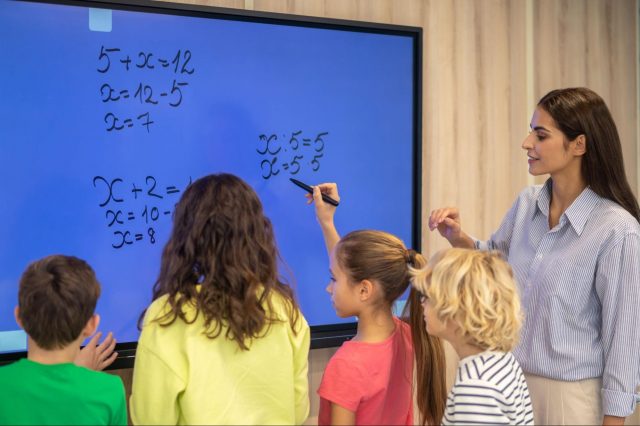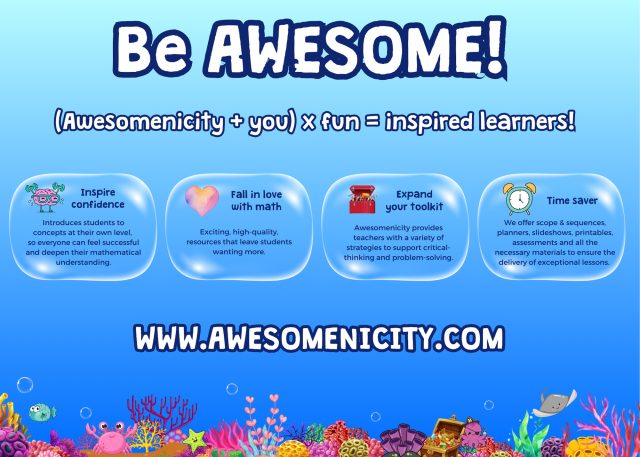One of the biggest challenges teachers face today is ensuring that all students can access learning in meaningful ways. Ability levels, learning preferences and needs can vary greatly within a given class, making it difficult to plan and deliver lessons that both engage every student while supporting deep understanding.
For teachers to tackle this challenge, we must create lessons that provide multiple entry points and flexible pathways. This ensures that every learner can actively participate and further grow. Additionally, it is becoming increasingly more important to incorporate adaptive teaching in lessons; making changes on the spot when necessary to ensure all students meet their objectives while maintaining lesson flow and rigor.
With so many things to consider and all the other tasks a teacher must juggle, you can understand why one might feel very overwhelmed. So how can we design learning environments where all students can thrive without overburdening teachers? Keep on reading to find out!

Why is differentiation important?
First of all we need to understand why it’s important to design lessons that are accessible and flexible for all learners. While it would make things much easier if we would focus on a one-size-fits all approach, creating an inclusive learning environment means that all students have the opportunity to engage, grow and succeed regardless of their starting point.
With a lack of accessible and flexible learning activities for all, students may struggle to connect with the material. If the material is taught in a way that they do not understand, pupils may be more inclined to feel frustrated and overwhelmed which leads to disengagement. On the other hand, thinking of students who may already grasp the taught content or concept, they might not feel challenged enough and then lose motivation and the opportunity to further grow themselves.
Being intentional about creating learning experiences that offer different levels of challenge and support ensures that each child leaves the lesson a more confident learner; proud of their progress.
Why is it so challenging to meet the needs of all students?
During my time teaching KS1, I often found myself struggling to set and explain tasks for each ability group. Some of my students would fly through tasks in a matter of minutes and were ready to move on, while others were still struggling to write numbers and do simple addition. One of the factors that made this all the more challenging was having a large class.
Many schools in the UK have over 30 students per class, and while international schools are known to have smaller class sizes, it is not completely unheard of to have more. Alongside large class sizes, other potential barriers a Primary Teacher might face include:
- Lack of support:
Schools may not always have the budget to provide each class with a Teaching Assistant. You may find that you don’t receive any additional support, or that it is only available a few times a week. - Lack of time:
Teaching can be a demanding job and teachers might find they have a never-ending to-do list. It can be hard to prioritise planning lessons with the right level of challenge and support for each student. - Limited resources:
Teachers may not always have access to suitable, engaging resources that pupils would benefit from. - Lack of mentorship or training:
Teachers may not have the mentorship or ongoing professional development they need to feel confident in creating adaptable learning environments, especially if they are new to the profession or have not taught that age group before and are faced with a class full of different learning needs.
If you are struggling with any – or all! – of the above, just like I was, I have some good news for you. Awesomenicity is here to help you out by providing all that you need to design flexible and accessible learning for all. Keep reading and I will let you know how.
What is Awesomenicity?
Awesomenicity is a one-stop-shop for all the resources teachers need to deliver highly engaging, differentiated maths lessons to Years 3-6 (Grades 2-5). Created by three international educators with over 45 years of combined experience, Awesomenicity’s resources and teaching tools are based on the latest research. From carefully crafted, concept-based lessons to tiered assessments, teaching engaging and inspiring maths lessons has never been simpler.
What does Awesomenicity offer?
Awesomenicity is designed to make your maths lessons more accessible and inclusive than ever before. Here’s a look at what they provide you with:
- Step-by-step lesson slideshows for lesson delivery:
These include maths strategies, critical thinking exercises and problem-solving activities, which incorporate a CPA (Concrete, Pictorial and Abstract) approach, and align with Universal Design for Learning (UDL). - Differentiated resources:
Printable resources available for each lesson, which help to support and challenge students. - Assessment tools:
Tiered assessments so all learners can successfully demonstrate their learning, with easy–to-use marking rubrics and student reflection tools. - Creative and engaging lessons:
The platform offers activities, games, problem-solving activities that inspire fun moments for collaboration, exploration and excitement, while bringing maths to life in the classroom. - Alignment with global curricula:
Whether you’re teaching the UK, US, Australian or international curriculum, Awesomenicity provides a comprehensive scope and sequence that fits all.
How can Awesomenicity help teachers?
Sounds great so far, right? If you’re still unsure, let us show you some of the ways in which Awesomenicity will make life easier for you.
Firstly, it saves teachers time by eliminating the need to spend hours and hours creating differentiated lessons or activities. Everything you need is already in one place and is ready to go, meaning you will have more time available to dedicate to other tasks or even life outside of work. Awesomenicity also offers ready-adapted resources for all levels, meaning that adaptive teaching is already built in and supported with every lesson you deliver. This gives you one less thing to worry about and provides support in those moments when you find students are struggling to understand.
Awesomenicity’s resources won’t just help pupils to excel academically, but the tiered activities provided encourage them to persevere and adopt a growth mindset, helping prepare them for life outside of the classroom. Every lesson also focuses on critical thinking, problem-solving and real-life situations, helping bring maths to life. This approach helps students see maths as a journey, rather than just a process of memorisation and right or wrong answers.
While differentiation mainly relies on the teacher providing the students with appropriate exercises, Awesomenicity helps you encourage students to take ownership of their own learning by providing opportunities to choose activities based on how confident they feel, giving each child a voice.
If you are worried that your current maths lessons aren’t keeping students engaged, there is no need to worry as Awesomenicity’s lessons provide lots of fun games, which not only make the lessons exciting, but also help students develop soft skills like communication and cooperation.

What key strategies does Awesomenicity use for differentiation?
In case you’re wondering exactly how Awesomenicity will support you with differentiation, let’s explain some of the strategies that form the basis of their resources.
- Learning zones:
As you can imagine, activities are categorised into (and specifically made for) different tiers. In Awesomenicity’s lessons, you will find that activities are split into three distinct challenge levels referred to as “Diving Zones”. While students may be set a specific task, they will also have the opportunity to move between these zones and choose activities based on how confident they feel with the lesson’s content, once again promoting student agency. - Differentiated modalities:
One of the key things that makes Awesomenicity stand out is their use of multiple modalities. Their lessons incorporate a range of visual, auditory, kinesthetic and tactile activities. This means that tasks are not only differentiated, but also cater to each student and their preferred learning styles – who wouldn’t want that?
Mastering differentiation in Primary Maths with the right tools
So there you have it. Designing learning for all doesn’t have to be difficult! If you have the right tools you’ll find that it can greatly benefit both yourself and your students.
If you’re looking for a way to enhance your primary maths lessons – why not just go for it and sign up to Awesomenicity? You will even have a free 7-day trial in case you want to verify it’s true when we say their resources are fantastic. 🤩
But wait!… That’s not even the best part. All Teacher Horizons members are currently eligible for exclusive discounts when they sign up to Awesomenicity, helping you save time and money. Make sure to create your free Teacher Horizons profile today if you haven’t already and head to your dashboard to take a look at our offers. 👀




